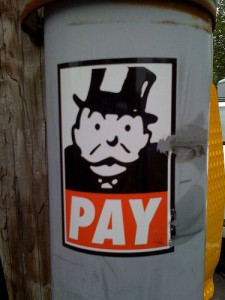How much do you have to pay each month to get your Chapter 13 plan confirmed by the judge?
The beauty of Chapter 13 is that it depends on your circumstances.
But the important fact is that debtors get to write their own Chapter 13 plans, so long as they meet the Chapter 13 confirmation tests.
The Chapter 13 confirmation tests
Chapter 13 plan must meet three tests:
- repay in full Priority Claims..
- meet the Best Interests of Creditors test, and
- meet the Best Efforts test.
So how do you calculate what you have to provide for in payments to get a Chapter 13 plan confirmed?
Calculate the amount required by each test. The largest of the sums is the amount that must go to creditors over the life of the plan.
Walk through the plan payment calculations
Priority claims must be paid in full through a Chapter 13 plan.
Total any priority tax claims and any unpaid child or spousal support. These are the most common priority claims.
This number is the Priority Claims number.
Best Interests of Creditors test asks: what would creditors get if this case were a Chapter 7 liquidation case.
Calculate the value of assets that are not protected by an exemption and subtract the estimated costs of administration by the Chapter 7 trustee. That is the Best Interests Test number.
Best Efforts test asks: how much “disposable income” does the debtor have monthly.
The ’05 amendments to the Bankruptcy Code define “disposable income” as the Current Monthly Income in Form b22C. That monthly income is multiplied by 12 to get an annual income figure (all hypothetical, you understand.) If the annual income is over the median family income in the state, the calculations in the B22C form produce “monthly disposable income.”
Determine which number is largest. That is the amount that a Chapter 13 plan must provide to unsecured creditors over the life of the plan.
Payment add-ons
Remember that the plan will also pay the Chapter 13 trustee’s commission and allowed attorneys fees.
It may also provide for debts secured by vehicles or for a cure of mortgage arrears, which are both secured claims. So to get the required number of dollars to creditors, you will have to pay in additionally enough to pay secured claims, the trustee and your attorney.
The plan may run anywhere between three years and five years. Payments may be the same each month, or they may increase over the life of the plan.
Plan payments may come from the sale or refinance of assets.
But the total must equal the largest of the Test Numbers.

